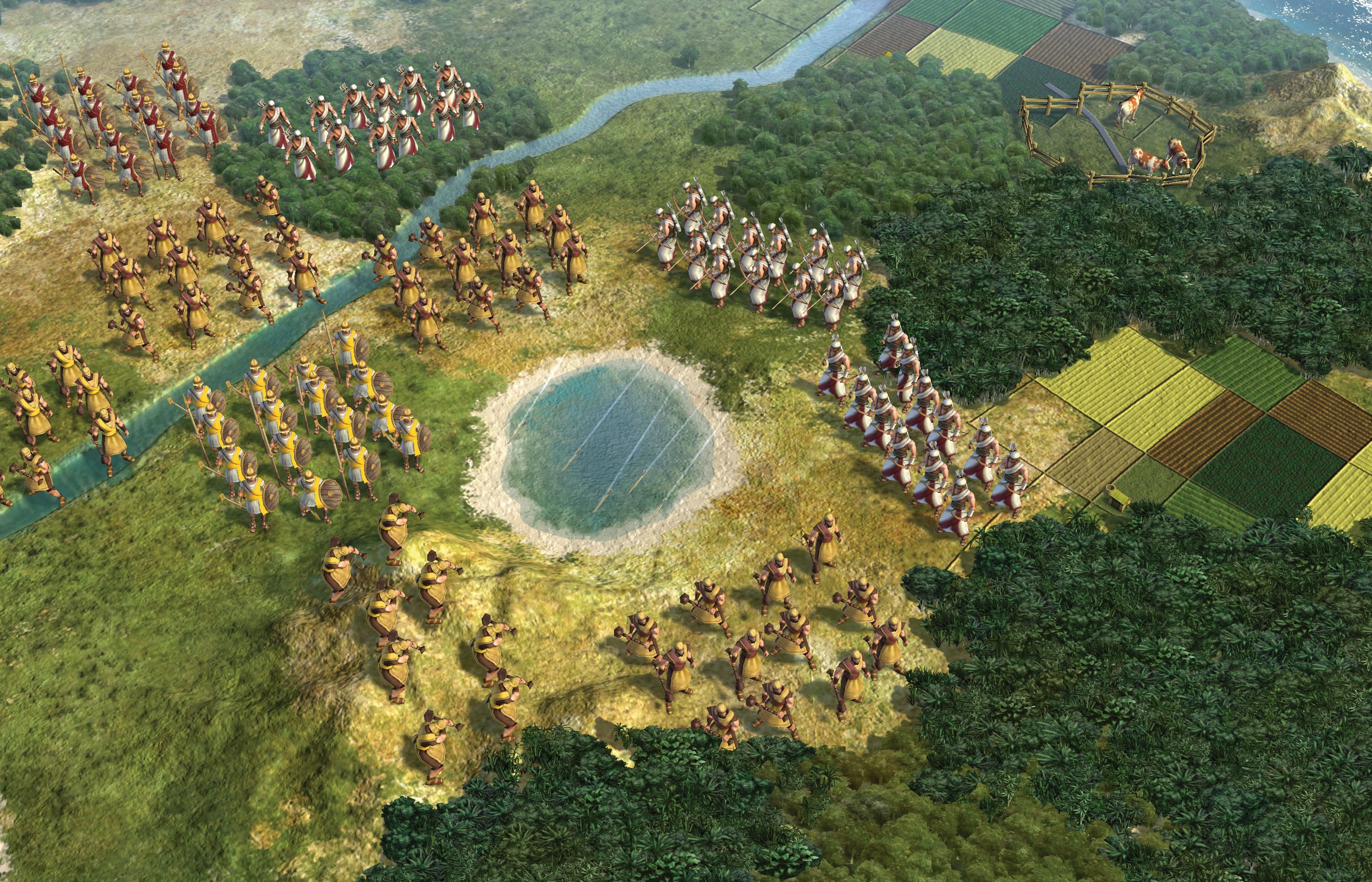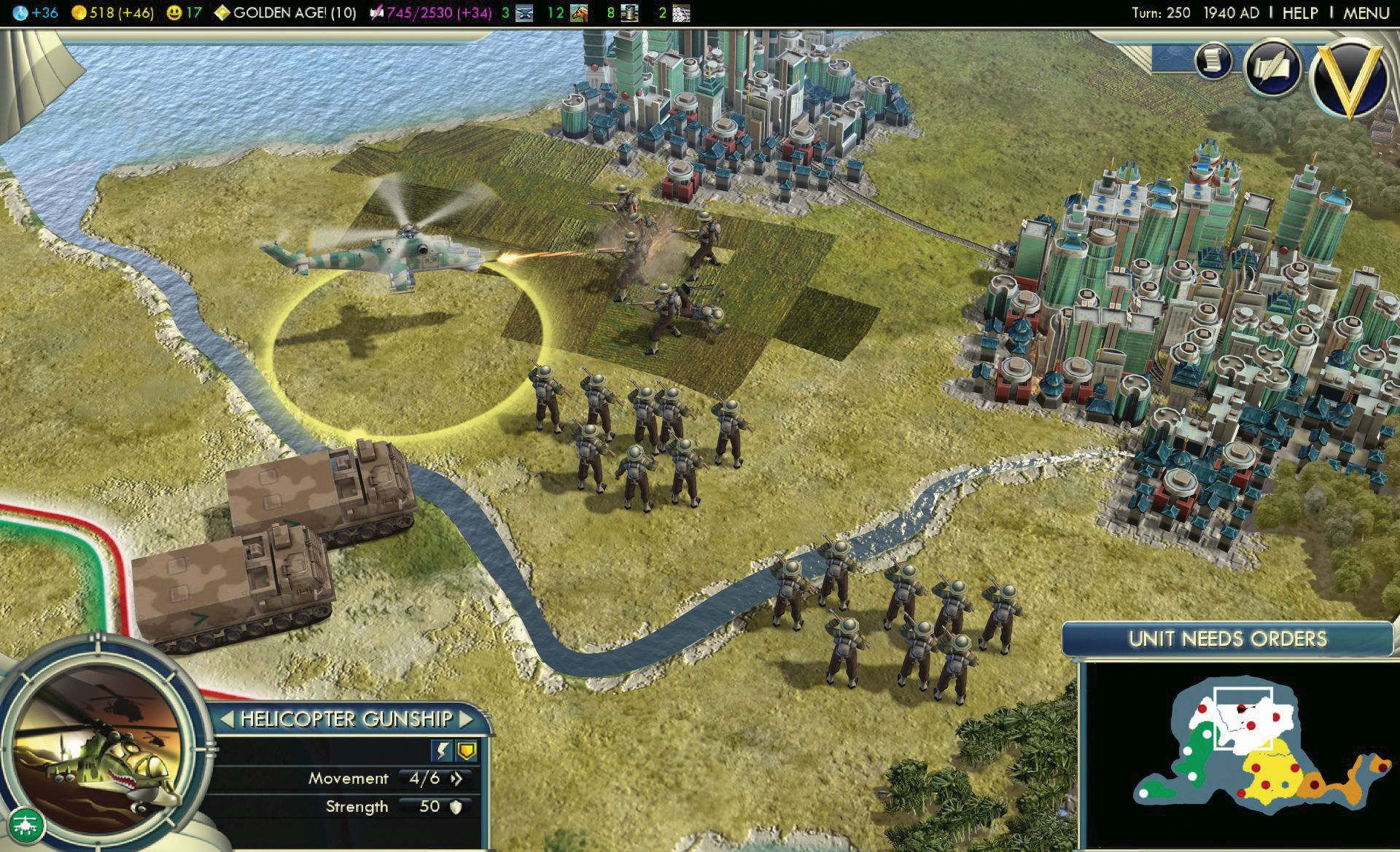The complete history of Civilization
26 years of conquest, building and Montezuma being a bit of a dick.
Civilization V
Squares are dead! Long live hexes!

A storm was brewing at Firaxis, and it was undeniably hex-shaped. Since 1991, the series had used square grids, while more and more 4X and wargames gravitated towards the sexy angles of the hexagon. As a fan of games like Panzer General, new lead designer Jon Shafer decided to introduce Civilization and its many adherents to the joy of hex.
Development started in early 2007. Shafer was 21, and he wanted to do something different. “Civilization IV was such a good game, so we wanted to put a different spin on things. We acknowledged that it was going to be controversial, not everyone was going to like what we did, but we made a conscious effort to push things in a different direction.”
What could be more controversial than killing squares? A lot of other things, it turns out. Surprising to Shafer, getting people to be open to it wasn’t all that difficult. He’d had the idea, and remembers suggesting it off the cuff, but never meant it seriously. Then, in a design meeting, someone else threw the idea out there. Sid Meier was there, and his opinion about hexes had changed over the years. He thought it was a good idea. So did the artists. And the engineers.
It was easier to do since, like Civilization IV, the fifth iteration also used a new engine, built from scratch. It also allowed the art team to elevate the series’ aesthetic. “It broke a lot of boundaries in a lot of ways. It certainly had higher system requirements than some people were accustomed to with Civilization, but overall it was something that worked out in the end.”


Jon Shafer
Shafer left Firaxis after Civ V, founding Conifer Games. He’s working on a project with Paradox Interactive.
In any other Civilization, the hexes might have been the headline attraction, but Schafer wasn’t joking about wanting to make big, potentially controversial changes. Stacks of doom were gone. No more could conquerors cram armies into a single tile. Instead, each unit needed its own tile, pushing things like unit placement and logistics to the forefront. It was one of the biggest changes to combat in the series’ long history. Shafer is unexpectedly ambivalent about it now.
“The idea was to add more depth to the combat system. Lots of different systems had been tried, and none of them worked very well. But I don’t think the one-unit-per-tile system works very well, either, though it’s probably funny hearing me say that. It was an experiment, and it’s something that’s changed the series. A stack model is probably better, however; it’s more suited to a game of Civilization’s scope.”
The biggest gaming news, reviews and hardware deals
Keep up to date with the most important stories and the best deals, as picked by the PC Gamer team.
Despite this, the unstacking has continued in Civilization VI, and though he doesn’t think it works as well as it could, Shafer still believes that Civilization V’s combat is more interesting than it was in previous games. It gives more prominence to the map. You want to put archers on hills, hide warriors behind forests and generally pay more attention to the environment. And maps, I have learned, are one of Shafer’s passions.
“There are very few designers who love maps as much as me. I want to put as much as I can on the map, utilise that map, utilise random maps, procedural generation.” Shafer starts to lose himself in a list of the map’s potential. He wants to use it to steer the game and highlight things that players might want to do, or explore, and in Civilization V, the result is a world that’s full of detail.

“This was something that was heavily emphasised and contributed by the art team. Our art lead, Dorian Newcomb, one of his bullet points on the art was ‘a living world’. That also fed into the design side because he was one of the first members of the team, and he said, ‘These are the pillars that we’re looking at on the art side.’ It made sense, so I thought maybe we could try to do more here.”
In hindsight, Shafer admits that there are some things he would do differently, and he has new ideas about how to bring strategy maps to life more, and what can be done with unit stacking. But he doesn’t dwell, and he certainly doesn’t regret the experiments and changes.
“The only way I know how to do things is say, ‘What’s the craziest thing we can pull off here?’ Not everybody is going to like that approach. But there are plenty of Civ games, and there will be more in the future I’m sure, so people will have a chance to see many iterations.”

Fraser is the UK online editor and has actually met The Internet in person. With over a decade of experience, he's been around the block a few times, serving as a freelancer, news editor and prolific reviewer. Strategy games have been a 30-year-long obsession, from tiny RTSs to sprawling political sims, and he never turns down the chance to rave about Total War or Crusader Kings. He's also been known to set up shop in the latest MMO and likes to wind down with an endlessly deep, systemic RPG. These days, when he's not editing, he can usually be found writing features that are 1,000 words too long or talking about his dog.

